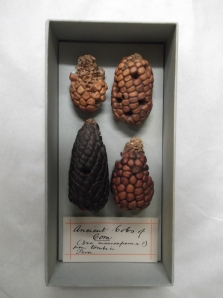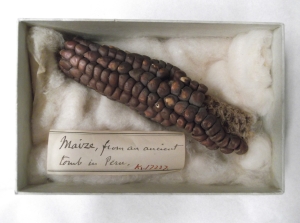Over the past several decades anthropologists active in the field of ancient Peruvian civilisation have scrutinised the role played by the grain maize. This may seem like a rather odd thing to be scrutinising but how a civilisation feeds itself has a remarkable impact on how it develops. Ancient civilisations that became dependant on farming, such as Egypt and China, established permanent settlements. The consequence of this was the development of traits that we attribute to a civilisation, such as monumental architecture and organised religion. Recently a consortium of north and south American higher education institutions, including the Field Museum, Chicago, USA, published a paper confirming that the rise of ancient Peruvian civilisation was linked to the extensive farming of maize during the Late Archaic period (3000–1800 BCE). You can read the full paper at http://www.pnas.org/content/early/2013/02/19/1219425110

Ancient maize excavated from a tomb. Peru, South America. Manchester Museum Living Cultures collection. 2013.
Manchester Museum has a wealth of ancient Peruvian artefacts including textiles, ceramics and tools, some of which are on display in the World Cultures gallery. Amongst these manufactured objects are several pieces of ancient maize excavated from Peruvian tombs. The fact maize was buried with the deceased person highlights its social and cultural significance.

